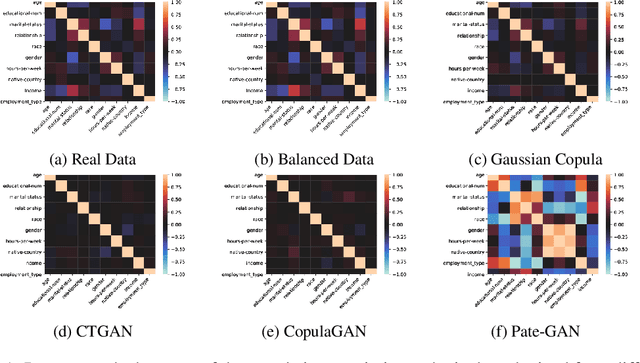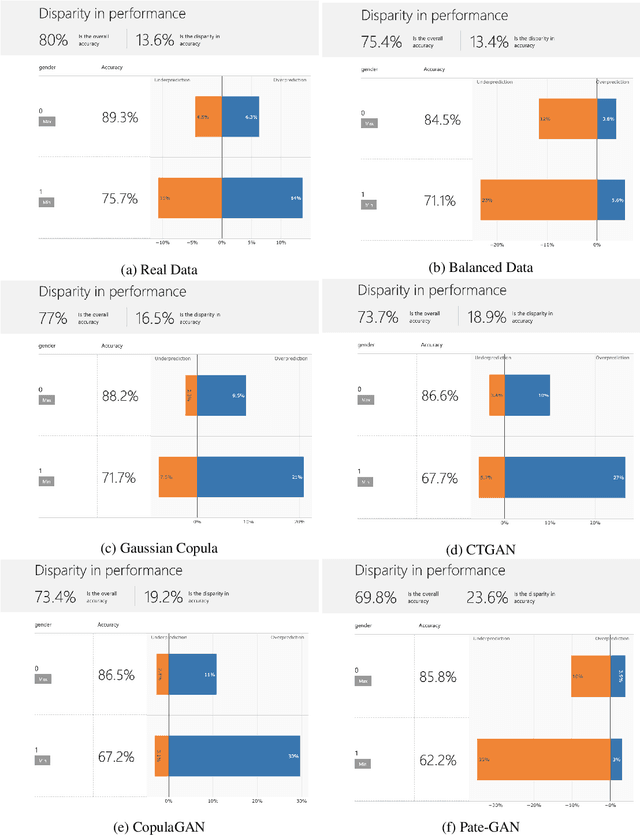Transitioning from Real to Synthetic data: Quantifying the bias in model
Paper and Code
May 10, 2021


With the advent of generative modeling techniques, synthetic data and its use has penetrated across various domains from unstructured data such as image, text to structured dataset modeling healthcare outcome, risk decisioning in financial domain, and many more. It overcomes various challenges such as limited training data, class imbalance, restricted access to dataset owing to privacy issues. To ensure the trained model used for automated decisioning purposes makes a fair decision there exist prior work to quantify and mitigate those issues. This study aims to establish a trade-off between bias and fairness in the models trained using synthetic data. Variants of synthetic data generation techniques were studied to understand bias amplification including differentially private generation schemes. Through experiments on a tabular dataset, we demonstrate there exist a varying levels of bias impact on models trained using synthetic data. Techniques generating less correlated feature performs well as evident through fairness metrics with 94\%, 82\%, and 88\% relative drop in DPD (demographic parity difference), EoD (equality of odds) and EoP (equality of opportunity) respectively, and 24\% relative improvement in DRP (demographic parity ratio) with respect to the real dataset. We believe the outcome of our research study will help data science practitioners understand the bias in the use of synthetic data.
 Add to Chrome
Add to Chrome Add to Firefox
Add to Firefox Add to Edge
Add to Edge